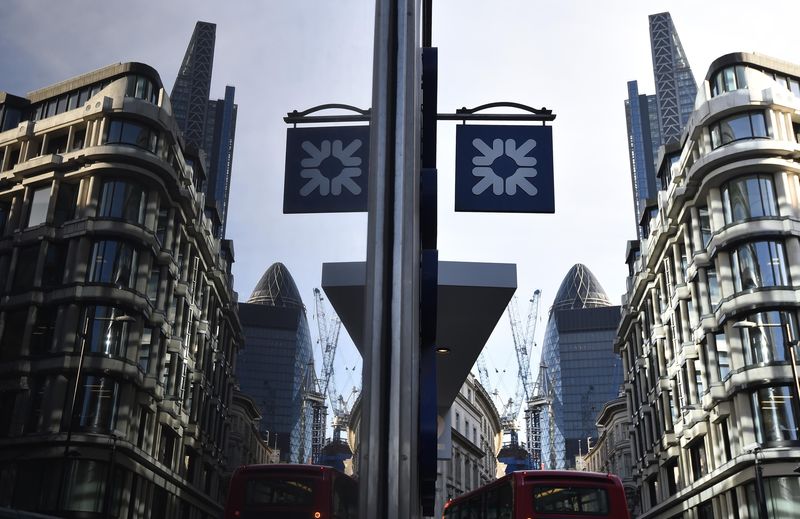By David Milliken and Huw Jones
LONDON (Reuters) - The Bank of England warned Britain's banks they should expect a more exacting test next year of their defences in the event of a crisis abroad, after state-backed lenders narrowly passed a debut check focussed on potential domestic strains.
Lloyds and rival Royal Bank of Scotland scraped through this year's test, proving they could withstand the regulator's doomsday scenario of plummeting UK house prices and soaring unemployment, after both took pre-emptive measures to shrink their balance sheets and raise capital.
Next year's stress test, however, is likely to focus more on risks from overseas markets. That will mean a harder time for banks such as HSBC and Standard Chartered, which do much of their business in Asia.
"We can expect that we will look to some of those global risks much more closely, they will feature much more prominently," the governor of the Bank of England Mark Carney told reporters.
The Bank of England will also examine banks' ability to cope with a sudden liquidity crunch, and will scrutinise leverage ratios, which reflects their level of indebtedness.
"There will be no let-up even for those who passed with flying colours," said Neil Williamson, co-head of EMEA credit research at Aberdeen Asset Management.
Carney declined to say whether the Bank of England would give state-backed Lloyds approval to resume dividends next year after its narrow pass rate in this year's test.
"Any decision about future dividends at Lloyds is first a decision for the board of that institution, but it has to be consistent with their continuing need to build capital. There is no proposal to adjust the dividend at present," he said.
Investors said both Lloyds and RBS had performed credibly in a test that stimulated a 35 percent collapse in house prices.
"While the passes weren't great, they were passes," said David Moss, head of European equities at F&C Investments. "The test was deliberately harsh and what's key is they passed and we can move forward."
Shares in Lloyds were up 1.3 percent at 11:15 a.m. while RBS shares were up 0.1 percent.
The Co-operative Bank, which nearly collapsed last year before being bailed out by bondholders, was the only bank to fail the test, with a core capital ratio of minus 2.6 percent.
Co-op Bank said it would sell more loans to reduce its risk-weighted assets by another 5.5 billion pounds by the end of 2018. It said it was unlikely to make a profit in the next three years while it works on its recovery plan.
DEBT BURDENS
Britain decided to introduce annual stress tests for its banks in the wake of the 2007-09 financial crisis which required taxpayers to pump 66 billion pounds into RBS and Lloyds.
While the Bank of England said Tuesday's results showed that the core of the banking system was now significantly more resilient, it criticised the banks for failing to give central bank staff full answers during the tests.
"In a number of instances, the nature of the interactions fell below the standards set out," the Bank of England said, without identifying which banks it was talking about.
This year's stress tests required banks to have a core capital ratio of 4.5 percent but from next year, the Bank of England said that it would also assess banks' leverage ratios.
Regulators are increasingly emphasising leverage ratios amid widespread distrust of banks' own assessment of the riskiness of their assets. The leverage ratio removes assets' risk weighting.
Lloyds, RBS and Santander UK had leverage ratios below the current 3 percent requirement under the Bank of England's stressed scenario. Barclays' leverage ratio was 3 percent under the stress test.
KPMG estimated that if banks had been expected to reach a leverage ratio of 3 percent in this year's tests, then they would have had to shrink balance sheets by 350 billion pounds.
From 2019 onwards, large UK banks will have to have a leverage ratio of 4.05 percent.
The Bank of England stress test added a number of additional layers on top of those applied by European regulators in an EU-wide test of 123 banks in October, including a rise in interest rates to 4 percent from 0.5 percent currently.
Under the stress scenario, RBS's core capital ratio fell to just 4.6 percent, a whisker shy of the 4.5 percent minimum required, before actions it had taken this year were taken into account.
Lloyds' core capital ratio was 5.0 percent before its actions were taken into account.

RBS, which is 80 percent owned by the state, said it would sell 2 billion pounds of notes to bolster capital.
(Additional reporting by Matt Scuffham, Simon Jessop and Steve Slater; Writing by Carmel Crimmins; Editing by Alexander Smith and Clara Ferreira Marques)